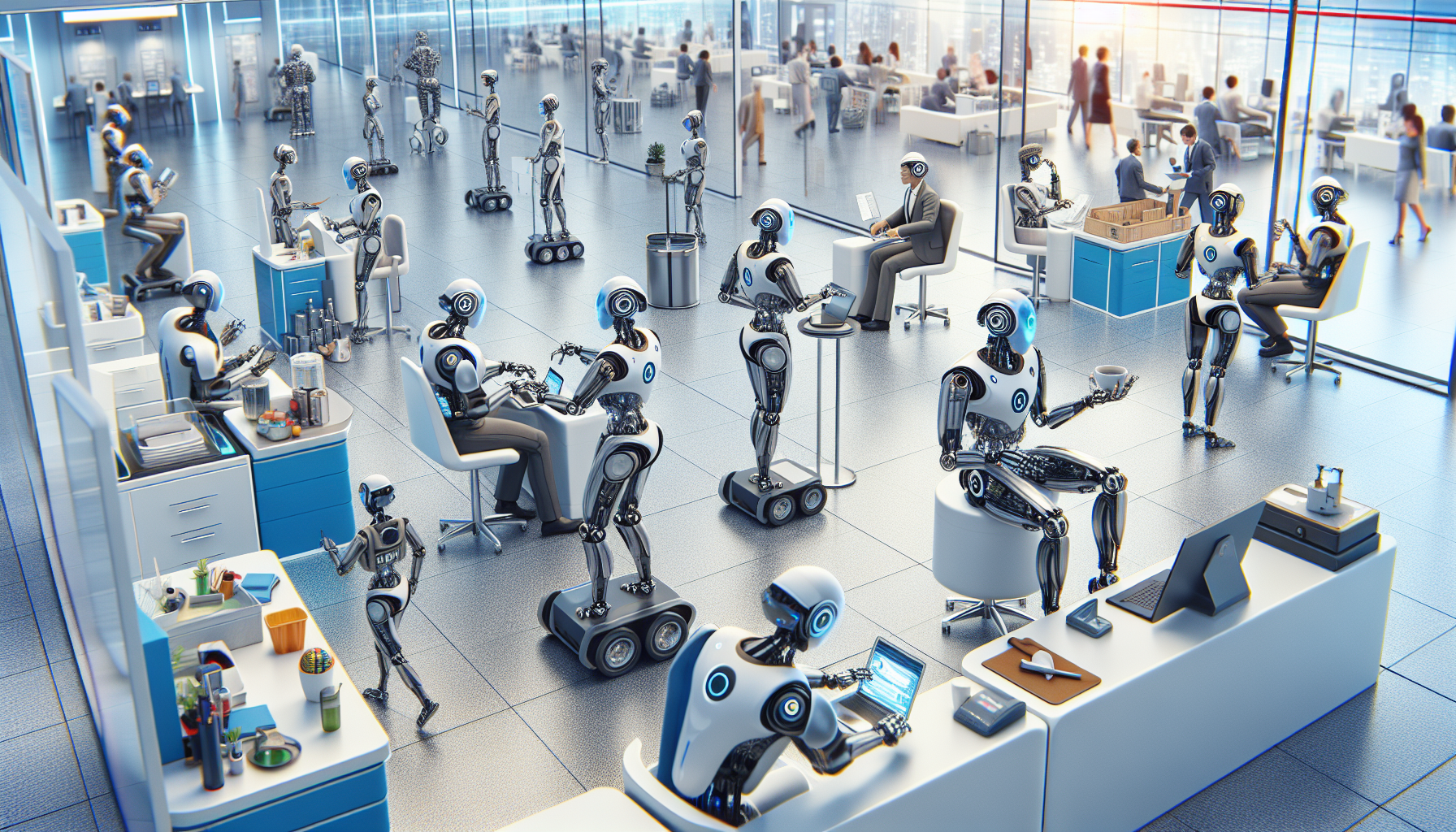The Rise of Automation and Robotics
The Historical Context
Work has always evolved alongside technology. From the agricultural revolution that introduced plows to the industrial revolution that brought machines into factories, humans have consistently adapted to changes in how work gets done. Now, we find ourselves on the brink of another significant transformation as automation and robotics steadily infiltrate various sectors.
Why the Shift Towards Robots?
Several factors are driving the shift towards utilizing robots and automation. First, advancements in artificial intelligence (AI) and machine learning (ML) have led to robots becoming more capable and versatile. These technologies enable machines to learn from data, adapt to new tasks, and improve over time. Secondly, the pursuit of efficiency and cost-effectiveness by businesses encourages them to look towards automation as a solution.
Industries Under Transformation
Manufacturing
The manufacturing sector has been at the forefront of automation for decades. Robots are not just performing repetitive tasks; they are increasingly taking on complex jobs alongside human workers. Automated systems can work around the clock with minimal downtime, increasing productivity while reducing labor costs. As companies adopt more advanced robotics, we can expect a shift from traditional assembly lines to flexible manufacturing systems where robots and humans collaborate seamlessly.
Healthcare
In healthcare, robots are transforming patient care and support. Surgical robots assist in precise operations, while AI-driven systems help in diagnosing diseases through analyzing medical data. Additionally, robots are being used in elder care and rehabilitation, providing both physical assistance and companionship. This not only enhances the quality of care but also addresses the growing shortage of healthcare professionals.
Transportation
The transportation industry is experiencing one of the most visible impacts of robots and automation with the advent of self-driving vehicles. Companies like Google, Tesla, and various startups are immersing themselves in the development of autonomous cars, trucks, and drones. These innovations promise to redefine how we commute and transport goods, potentially reducing accidents caused by human error and streamlining logistics.
Retail and Customer Service
Robotics is making significant inroads in retail and customer service too. Automated checkout systems, chatbots, and inventory management drones are just a few examples. These technologies not only enhance efficiency but also improve the customer experience by reducing wait times and providing instant service. However, the human element remains crucial, as consumers often prefer personal interactions over automated responses.
Challenges to Employment
While the integration of robotics brings benefits, it also poses challenges, particularly concerning employment. As machines take over routine tasks, many workers may find themselves displaced or needing to adapt their skill sets. The future could see a significant divide between low-skilled jobs that are easily automated and high-skilled jobs that require creativity and emotional intelligence.
The New Skill Set for the Workforce
Emphasizing Human Skills
In this new landscape, human skills like creativity, problem-solving, and emotional intelligence will become increasingly valuable. As machines handle repetitive tasks, workers will need to focus on areas where humans excel. For instance, while a robot can gather data, the interpretation of that data and decision-making will rely on human input.
The Importance of Continuous Learning
With technology evolving rapidly, continuous education and reskilling will be paramount. Workers will need to engage in lifelong learning to keep up with changes and remain relevant in the workforce. Organizations can play a pivotal role by providing training programs that help employees develop the necessary competencies.
Collaborative Robots (Cobots)
In many workplaces, the future will likely involve collaborative robots—commonly referred to as cobots. These robots are designed to work alongside humans rather than replace them. Cobots can handle tedious tasks, allowing human workers to focus on more complex and creatively demanding aspects of their jobs. This collaboration can lead to increased productivity and job satisfaction.
Regulatory and Ethical Considerations
The Need for Regulation
As robots become an integral part of the workforce, there will be a need for clear regulations addressing their use. Questions about liability in accidents involving autonomous vehicles or medical robots will need careful consideration. Policymakers must establish frameworks that ensure safety while encouraging innovation.
Ethical Implications
The ethical implications of robots taking over jobs cannot be ignored. There is a moral responsibility to consider the impact on workers displaced by automation. Companies and governments must strategize to provide safety nets and transition plans for those affected, ensuring that the shift towards a robotic workforce does not lead to greater inequality.
Adapting to the Future
Redefining Education Systems
Educational institutions will play a crucial role in preparing future generations for the new work environment. Curriculums that focus on STEM (Science, Technology, Engineering, and Mathematics) along with critical thinking and emotional intelligence will be essential. Incorporating hands-on experiences with technology can foster adaptability and readiness for the future job market.
The Role of Human-Robot Interaction
As robots become more commonplace in the workplace, the ability to work well with machines will be an essential skill. Understanding how to collaborate effectively with robots requires training and experience. Human-robot interaction (HRI) research is gaining importance, aiming to create intuitive interfaces that facilitate seamless collaboration between humans and machines.
Conclusion of Employment Landscapes
As incredible robots continue to take over various jobs, the workforce must adapt and evolve. A future filled with collaboration between humans and machines offers both challenges and opportunities. Embracing this change and preparing for it will be essential for thriving in the next era of work.
The Bottom Line
While the future with incredible robots might seem daunting, it also holds the promise of new kinds of work and opportunities. By focusing on developing valuable human skills and fostering an environment of collaboration, we can create a workforce that not only survives but thrives amidst the changes brought on by automation and robotics.
